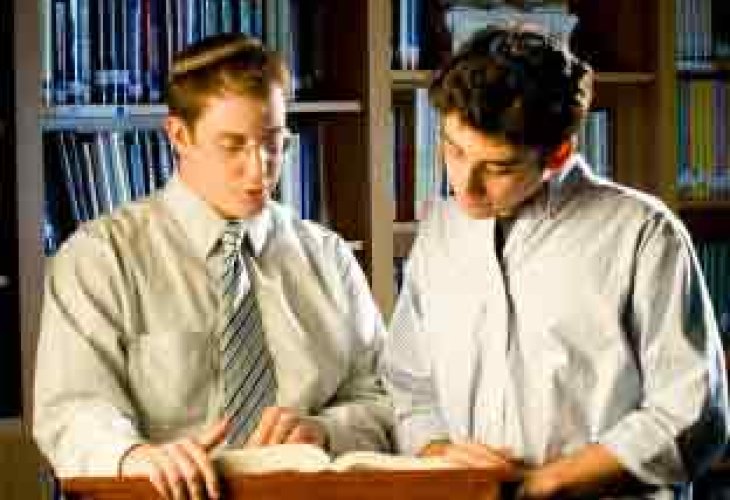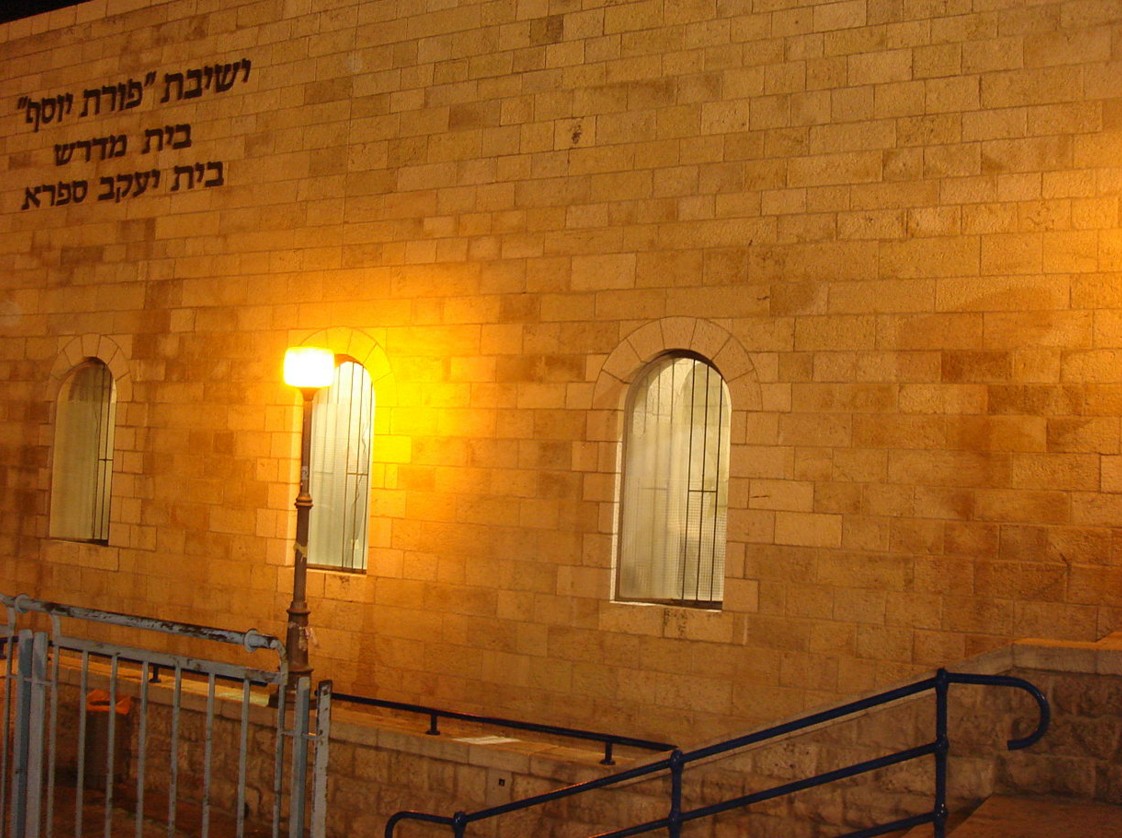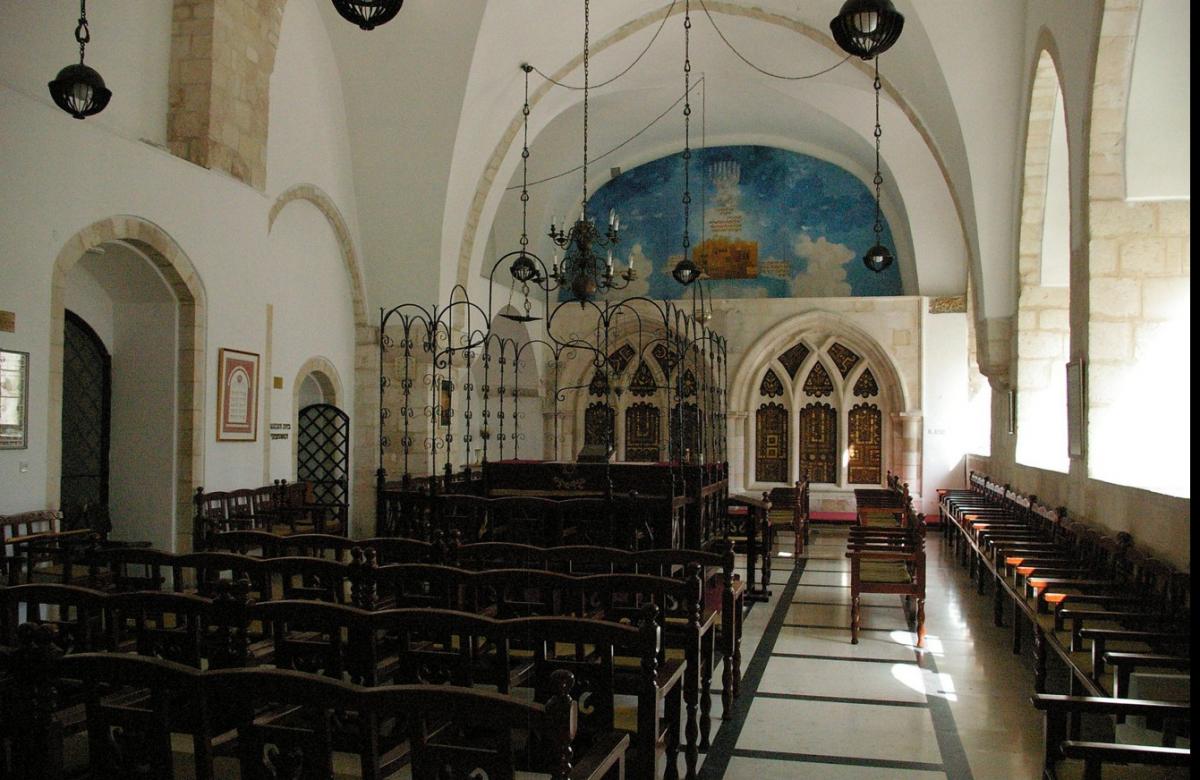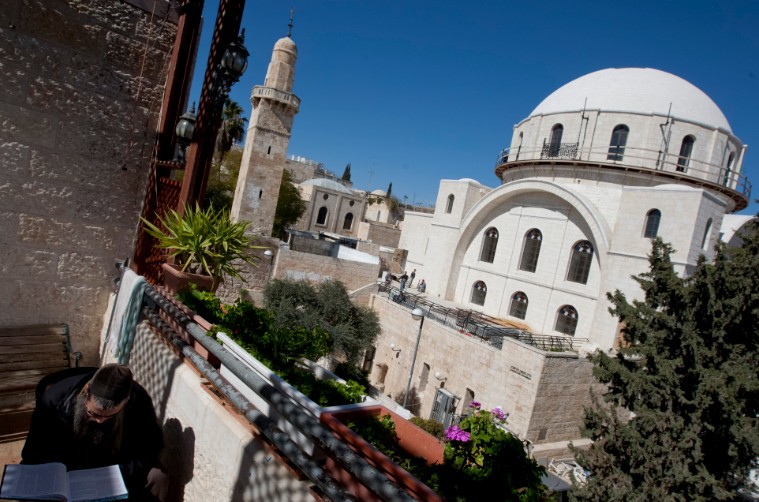This City You Have Chosen: A Jewish Awakening in Old Jerusalem
It seemed that the voice of Torah was almost silenced, but suddenly it is bustling with life. Yeshiva students and scholars fill the synagogues and study halls in the Old City of Jerusalem. Where were the oil jug and shofar from the Temple kept? What stories were told about the rocks of Porat Yosef Yeshiva? And why was a synagogue named after Elijah the Prophet? A tour of then and now in the alleys of the Jewish Quarter.

Old Jerusalem, a place where the Divine Presence has never departed, was once blessed with yeshivas, synagogues, and study halls of the great scholars and mystics. Unfortunately, it seemed in recent years that the Old City and the Jewish Quarter were slowly turning into a tourist site, and some of those glorious yeshivas and synagogues were closed during the week, their once vibrant voices of Torah and prayer now silent. Yet recently, a true spiritual revolution has taken place in this holy place. Roughly a thousand scholars are diligently studying their texts, filling the yeshivas, synagogues, and study halls throughout Jerusalem's Old City within its walls.
We toured the streets and alleys of the Jewish Quarter and saw firsthand how the place is once again bustling with life, with the sound of Torah resonating from the yeshiva walls and study halls restoring the crown to its former glory.
The Days of the First and Second Temple: The City of God
During the Temple days, Old Jerusalem was adorned with noble and holy figures who lent the streets of Old Jerusalem an aura of splendor, grace, and holiness that flowed from the upper worlds, imbuing the city with sacred charm. In those days, it was the priests and Levites who resided in this honor.
In subsequent centuries, enormous mystical figures in Jerusalem, such as the "Or HaChaim" Rabbi Gedaliah Hayon, the Rashash, and others, founded yeshivas and immersed in the mystical Torah day and night. These figures, seemingly belonging not to this world but to a higher, mysterious spiritual realm, dressed in white robes and gleaming white turbans, shook the streets as they passed. All beings froze in their spots, trembling before the angels walking before them, remnants of the Great Assembly. An incidental encounter with one of these mystics would leave a deep impression on one's heart.
Porat Yosef Yeshiva: The Fountain of Sephardic Torah
In 1922, 93 years ago, with the establishment of the magnificent workshop, the "Porat Yosef" Yeshiva within the walls of Old Jerusalem, dedicated to preserving the spark of Sephardic Judaism, Jerusalem was graced with towering righteous figures immersed in Torah around the clock within this sacred study hall. In those days, the Porat Yosef Yeshiva housed many world-renowned scholars, the crown and head of Sephardic Jewry's Torah establishment, such as the gaon Rabbi Ezra Attiya, ztz"l, serving as the head of the yeshiva. The yeshiva's rabbis were the renowned scholars: Rabbi Eliyahu Lopez, Rabbi Yosef Shlush, Rabbi Moshe Ades, Rabbi Yaakov Ades, Rabbi Yehuda Tzadkah, ztz"l, and this is only a partial list.
Beside the holy yeshiva, in one of the rooms, the greatest kabbalists learned at "Oz and Hadar" Yeshiva under the leadership of the kabbalist Rabbi Ephraim Cohen, ztz"l. This sacred group included illustrious kabbalists like the venerable Rabbi Yitzhak Kaduri, the kabbalist Sage Salman Eliyahu, Rabbi Ben Zion Chazan, Rabbi Yehoshua Sharabani, Rabbi Avraham Harari Raful, ztz"l, and more.
As mentioned, great scholars of Sephardic Jewry studied at the "Porat Yosef" Yeshiva within the walls. Among the famous were: the renowned gaon Rabbi Ovadia Yosef, the gaon Rabbi Ben Zion Abba Shaul, the gra Rabbi Mordechai Eliyahu, Rabbi Shabtai Aton, the gra Baruch Ben Chaim, the gra Yosef Ades, the gra Tzion Levi, the gra Yehuda Maalem, ztz"l, and more.
 The yeshiva building
The yeshiva buildingLikewise, wishing health and long life to our teacher the gaon Chacham Shalom Cohen, shlit"a, the president of the Council of Torah Sages and head of Porat Yosef Yeshiva in the Old City, and a long list of excellent students, many of whom have become leading Torah figures, yeshiva heads, judges, and city rabbis over the years.
During the yeshiva's founding, a contemporary writer noted: "Near the Temple Mount in Jerusalem, an expansive plot of land extends. On these rocks, it is said, King David of Israel would pass, thrilling his sublime harp at midnight on his way to the House of Hashem...
"Upon arrival at the place, you are met from the open windows by a suppressed hum. This tune perhaps originated far back in the depths of creation – in Nehardea, in Pumbedita, in Cordoba. According to ancient tradition, this is where the Tablets of the Covenant were hidden, and it feels as though with the establishment of this great Torah study hall, the Tablets have been brought from the depths and returned to Israel..."
Beit El: The Scholars' Yeshiva and the Ancient Shofar
The Sephardic synagogues are among the oldest in the Jewish Quarter. One complex houses the four Sephardic synagogues named after Rabbi Yochanan ben Zakkai.
The most famous is Rabbi Yochanan ben Zakkai's Synagogue. Tradition says that this was once the site of Rabbi Yochanan ben Zakkai's study hall. Known as the place where all the "Rishon LeZion" rabbis, except during the nineteen years from 5708–5727, when Old Jerusalem was under Jordanian control, were crowned.
Looking at the upper central window on the southern wall reveals a glass shelf holding a shofar and an oil jug. Tradition, passed down by Sephardic elders, claims that the shofar and oil jug have been here since the Second Temple, for nearly 2000 years, and anyone who dares touch or move them will not complete their year. Based on this tradition, the anointment of the Messiah would be with this oil, and the shofar would herald his arrival.
 Rabbi Yochanan ben Zakkai's Synagogue
Rabbi Yochanan ben Zakkai's SynagogueSadly, the original shofar and oil jug were plundered by Arabs after the War of 5708, so today, other replacements stand there.
There were once many who prayed in this synagogue, and the voice of Torah was heard there loudly.
The synagogue next to Rabbi Yochanan ben Zakkai is known as "Elijah the Prophet's Synagogue." It is said that when the expulsions from Spain reached Jerusalem within the walls, there was no proper synagogue for the local community, and Jews were praying in private homes. It is therefore not surprising given the once dire situation; Rabbi Moshe ben Nachman, who arrived in Jerusalem a thousand years ago, recounted its desolation, stating he found only two Jewish dyers living there while others lived near Mount Zion.
As mentioned, the expellees from Spain established this synagogue named "Elijah the Prophet" due to a miracle that allegedly occurred: on one Yom Kippur, there was no minyan, and the community was searching for the tenth person when suddenly a dignified man appeared, whom they did not recognize, and prayed with them throughout Yom Kippur. At day's end, they sought to invite him to their homes, but he vanished. All knew it was Elijah the Prophet, hence the synagogue's name.
Alongside these synagogues is the "Istanbuli" Synagogue, founded in 1793 by immigrants from Istanbul, and in the space between them, the "Middle Synagogue," which is closed today.
In our tour of Jerusalem within the walls, we encountered the famous synagogue, Beit El Yeshiva, founded by the kabbalist Rabbi Gedaliah Hayon, later led by the revered Rashash. Established in 1736, this synagogue served kabbalists and those who prayed with meditations and intentions, learning the secret Torah in this small sanctuary. At midnight, they started with tears for the Shechinah's sorrow and followed with earnest Torah study day and night.
Even today, Torah learning and heartfelt prayers continue at "Beit El" Yeshiva. The place is truly imbued with holiness.
The "Or HaChaim" Sacred: Eleven Months of Prayer
Another established yeshiva within the walls of Jerusalem was the "Knesset Israel" Yeshiva, founded by the "Or HaChaim" Sacred, Rabbi Chaim ben Atar, in 1742. However, the rabbi did not long enjoy the yeshiva, as he returned his soul to the Creator eleven months later on the 15th of Tammuz 1743, buried on the Mount of Olives. Nevertheless, his disciples, per his teachings, delved into the esoteric Torah aiming to hasten the redemption through study facing the Temple site.
Additionally, there were Ashkenazi synagogues such as the renowned "Hurva" Synagogue founded by Rabbi Yehuda the Pious in 1701, rebuilt after destruction five years ago in 2010. Synagogues like "Tiferet Yisrael," "Ohel Yitzhak," "The Ramban," and "Chei Olam" Yeshiva also existed.
As noted, when the Jordanian Legion entered the Old City in 1948, many of the fifty synagogues were destroyed. Yet 19 years later, post-Israel's victory by Hashem's grace in the Six-Day War, the buildings that served great Jewish figures were restored. Unfortunately, in recent years, the Old City and Jewish Quarter have gradually become tourist attractions, with some former grand synagogues now mere museums during the week.
Arise and Shine: The Old City Today
It is heartening to recently witness the significant revolution taking place here, with synagogues and yeshivas filled with hundreds of scholarly students, learners of Zion as precious as gold, diligently studying the discourses of Abaye and Rava, gradually converting most synagogues within the walls into study halls.
This spiritual revolution, amplifying the voices of Torah and holiness within Jerusalem's walls, facing the Temple site, was initiated by Rabbi Hezekiah Nebenzhal, shlit"a, son of Rabbi Avigdor Nebenzhal, shlit"a, rabbi of the Jewish Quarter.
He declared an end to the town's desolation without the voice of Torah, founding the extensive Torah kingdom in Old Jerusalem from foundation to peak, a grand "Torah Kingdom" called "Shadow of the Temple."
 The Hurva (Photo: David Vaaknin / Flash 90)
The Hurva (Photo: David Vaaknin / Flash 90)What started years ago with a few dozen isolated scholars studying at the "Ramban" Synagogue culminated in a dramatic expansion last year, with blessings from esteemed rabbis, led by Rabbi Kanievsky, shlit"a. The place now hosts roughly a thousand dedicated scholars.
They study at "Porat Yosef" Yeshiva in the Old City on the bottom floor, rented from the yeshiva administration, about 700 scholars in all, with several hundred more scattered throughout the neighborhood synagogues. Some study at the "Ramban" and "Hurva" synagogues.
Entering "Porat Yosef" Yeshiva, we stepped into the "Shadow of the Temple" study hall and marveled at the sacred atmosphere, with 700 esteemed scholars of Zion, as precious as gold from across Jerusalem, devoutly studying Torah.
We recalled how around 80 years ago, the Gaon Rabbi Ovadia Yosef, ztz"l, studied in this holy place, distressed that such a vast and sacred building held only about 70 students. Today, his desires and blessings have been fully realized, with this sanctified structure bustling with life, Torah, holiness, and reverence.
Additionally, 200 young men study at "Porat Yosef" Yeshiva under the leadership of Rabbi Shalom Cohen, shlit"a, president of the Council of Torah Sages, while the upper floor hosts an international student yeshiva engaged in the holy aura of Jerusalem.
The special feature of the esteemed "Shadow of the Temple" kollelis the division into groups. Some study yeshiva subjects, others in a group of "Kodashim," some engage in legal discussions, and others cover topics like "Prohibitions and Permits," "Blessings," "Shabbat," "Niddah and Mikvah," with a daily page group and those following their hearts' desires. Each chooses their desired path.
In summary, with Rabbi Kanievsky's blessing and encouragement during his visit, saying that as holiness strengthens in this sacred place against nearby impurity, our Hashem will hasten the redemption. Indeed, the yeshiva leadership anticipates increasing Torah warriors to reach two thousand scholars to fill all synagogues and study halls facing the Temple site, restoring the crown to its former glory.
Leaving the synagogue and study hall complex within the walls of Jerusalem, we carry a prayer: May we be granted through Jacob's voice heard loudly to hear the voices of Levites on their platform, priests at their service, and Israel in their stations, and build Jerusalem quickly, Amen.

